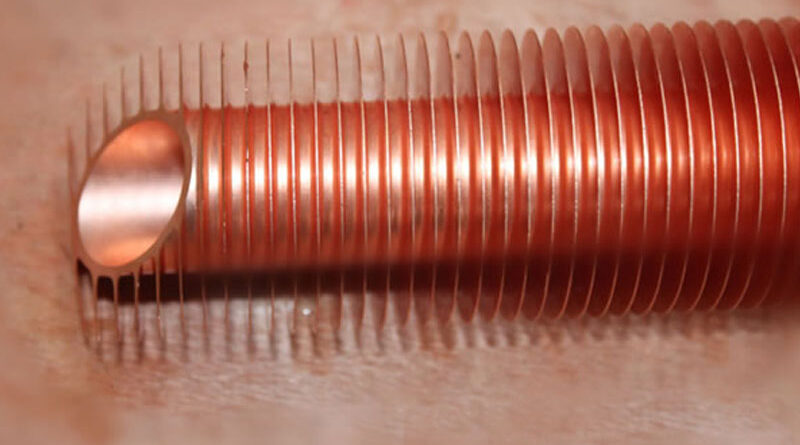Efficiency Unleashed: Advantages of Using Clad Fins in Heat Transfer
Are you looking for ways to maximize energy efficiency in your industrial processes? Clad fins represent a major advancement in heat transfer technology that can help you do just that.
By using clad fins in place of traditional materials such as stainless steel or copper, manufacturers across many industries have begun experiencing great advantages, from increased cost savings to improved temperature control and more.
In this blog post, we’ll take a closer look at how these unique components are revolutionizing the world of heat exchange and show why they should be part of any operation seeking cost-effective solutions. Keep reading to learn all about the full range of benefits offered by clad fin components!
What are Clad Fins and What Advantages do They Offer in Heat Transfer Solutions
Clad fins are innovative heat transfer solutions that have revolutionized the industry. They are made by bonding a thin layer of a highly conductive material, such as copper or aluminum, onto a base material, which is typically steel.
This creates a fin with superior thermal performance, as the highly conductive layer facilitates efficient heat transfer while the base material provides structural support.
Clad fins offer numerous advantages over traditional fins, including increased heat dissipation, improved durability, and greater flexibility in design.
They are used in a wide variety of applications, including air conditioning systems, refrigeration equipment, and power plants, where efficient heat transfer is critical for optimal performance.
Clad fins have truly raised the bar for heat transfer solutions, and they are a testament to the power of innovation in engineering.
The Benefits of Using Clad Fins for Heat Transfer Efficiency
When it comes to maximizing heat transfer efficiency, nothing quite beats the use of clad fins. By combining two materials, typically copper and aluminum, clad fins allow for optimal heat dissipation that can greatly improve the performance and lifespan of various heat transfer applications.
This is especially true in industries such as electronics and HVAC, where efficient cooling can make all the difference in preventing damage or system failure.
In addition to their superior heat transfer capabilities, clad fins are also incredibly durable and resistant to corrosion, meaning they provide a reliable, long-term solution for heat management.
How to Calculate the Optimum Number of Clad Fins Needed for Maximum Efficiency
When it comes to designing heat exchangers, determining the number of fins needed for maximum efficiency is crucial. The use of clad fins, which are thin coatings on standard fins, can enhance heat transfer and improve overall efficiency.
However, figuring out the optimum number of clad fins to incorporate can be a complex process. It involves considering factors such as the type of fluid being used, the heat transfer coefficient, and the surface area of the fins.
Through careful analysis, engineers can determine the ideal number of clad fins needed for their specific design. By doing so, they can ensure that their heat exchanger operates at maximum efficiency, effectively transferring heat with minimal energy consumption.
Understanding the Different Types of Clad Fins and Their Relevant Applications
Clad fins are one of the most important components in various industries such as HVAC, chemical processing, power generation, and others. Typically, clad fins are made of two different metallic materials that are seamlessly joined together.
Due to their unique construction, clad fins can provide excellent corrosion resistance, thermal conductivity, and other desired properties.
There are several types of clad fins available in the market, such as extruded flanged tubes, embedded flanged tubes, spiral flanged tubes, and others.
Each type of fin has its own set of advantages and applications. It is essential to understand these different types of clad fins and their relevant applications to ensure optimal performance in various industrial settings.
Tips and Tricks for Utilizing Clad Fins for Optimized Heat Transfer Performance
When it comes to optimizing heat transfer performance, utilizing clad fins can certainly come in handy. These fins feature a composite material that consists of two or more layers, each with its own unique properties.
This allows for increased heat dissipation while also reducing the overall weight and size of the system. But how can you get the most out of clad fins?
One key tip is to choose materials with low thermal resistance, such as copper or aluminum, for the core layer. Additionally, it can be helpful to use a high thermal conductivity material for the cladding layer, such as stainless steel, to enhance heat transfer even further.
By following these types of tips and tricks, you can ensure that your clad fins are working at peak performance and delivering the results you need.
All in all, clad fins are an essential component in heat transfer solutions that can make a significant impact on efficiency when utilized correctly.
With this comprehensive insight into the possible benefits of using clad fins, we hope that companies can discover ways in which they can leverage this technology to optimize their heat transfer performance while achieving greater cost savings in the long run.




